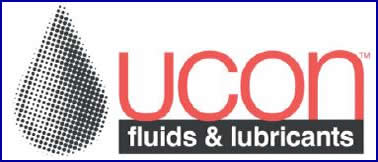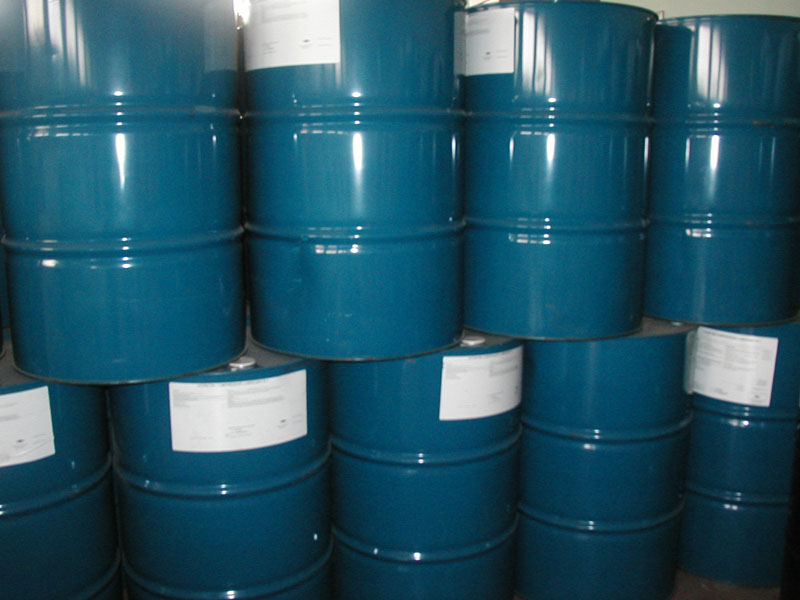| |
Ucon Compressor Lubricant R-1


Product Description |
UCON Compressor Lubricant R-1 is a water-soluble polyalkylene glycol lubricant specially formulated for use in high-pressure reciprocating compressors in natural gas service.
UCON Compressor Lubricant R-1 has found particular success in compressors used for the high-pressure (>3000 psig) injection of surplus gas back into oil field formations. This reinjection both conserves natural gas resources and serves to maintain pressure in the oil-producing formation. UCON Compressor Lubricant R-1 has also been used successfully in high-pressure injection of nitrogen. |
Product Features |
- Low solubility with hydrocarbons
- Good lubricity for cylinder lubrication
- Nonplugging in oil field formations
|
Advantages |
Because of its chemical composition, UCON Compressor Lubricant R-1 is water-soluble and has very low solubility with hydrocarbons, unlike a petroleum-based lubricant.
This is very important because:
- Natural gas dissolved into a lubricant has the effect of reducing lubricant viscosity, which could result in cylinder scoring and high packing wear rates. Compensating by using higher-viscosity lubricant results in other problems, especially at low temperatures.
- Lubricant dissolved in natural gas will actually be carried away, depleting the lubricating film in the cylinder. This leads to high use-rates or lubrication failures.
- UCON Compressor Lubricant R-1 carried over into the formation will not form sludges, which plug the oil field formation.
UCON lubricants of this type have been used over 25 years in similar applications. A UCON lubricant was chosen as the compressor lubricant to minimize carry-over downwell for underground natural gas storage fields because of its low hydrocarbon solubility. UCON lubricants have also been used in high-pressure (5000 psig) reciprocating compressor in nitrogen service with excellent results.
In addition to the unique properties necessary for this type of application, all UCON lubricants exhibit high viscosity indices, good film strength, excellent thermal stability and resistance to sludge formation. |
Typical Physical Properties
Viscosity |
|
(cSt at 40 ¡ãC)
(cSt at 100 ¡ãC)
(SUS at 100 ¡ãF) |
195
35.1
985 |
Viscosity Index |
229 |
Pour Point, ¡ãC(¡ãF) |
-43(-45) |
Flash Point |
|
Cleveland Open Cup, ASTM D 92, ¡ãC(¡ãF)
Pensky-Martens Closed Cup, ASTM D 93, ¡ãC (¡ãF) |
304(580)
240(465) |
Turbine Oil Rust Test, ASTM D 665 A |
Pass |
Copper Strip Corrosion Test |
1a |
FZG Extreme Pressure test, Stages Passed |
12 |
Coefficient of Expansion, at 55¡ãC |
0.00079 per ¡ãC |
Density, lb/gal, 20¡ãC |
8.75 |
Specific Gravity, 20/20¡ãC (68/68¡ãF) |
1.053 |
Case Study 1: High-Pressure Reciprocating Compressor for Natural Gas Reinjection |
Problem |
A Wyoming producer uses five Ingersoll-Rand reciprocating compressors for reinjection of natural gas into the oil field formation. Using a petroleum-based lubricant, the compressor's piston rings and rod packings showed scoring and abnormally high wear rates. |
Solution |
UCON Compressor Lubricant R-1 successfully solved this problem, allowing production from this field to continue for several years. |
Details |
Equipment: Ingersoll-Rand RDS 5 / " - stroke compressor, 710 rpm, 1200 hp, 3-cylinder, 3-stage (modified from 4-throw to 3-throw).
Output - 33 MMSCFD natural gas
Discharge Pressure - 6300 psia
Operating Conditions -
|
Suction |
Discharge |
Temperature |
Pressure |
Temperature |
Pressure |
1st Stage |
50¡ãF |
750 psig |
170-200¡ãF |
1800 psig |
2nd Stage |
70¡ãF |
1800 psig |
170-200¡ãF |
3000 psig |
3nd Stage |
70¡ãF |
3000 psig |
170-200¡ãF |
6300 psig |
Composition-
Piston Rings: Glass-filled Teflon, 1st and 2nd Stages, 90/10 lead/bronze, 3rd Stage
Cylinder Rods: Bronze, 1st and 2nd Stages
Packings: Teflon-bronze, 3rd Stage |
Results |
There has been no failure of lubricated parts, and a visual inspection showed no sign of abnormal wear. |
Case Study 2: High-Pressure Reciprocating Compressor for Nitrogen Injection |
Problem |
Another secondary recovery project in Wyoming uses Ingersoll-Rand reciprocating compressors for injection of nitrogen into the oil field formation. Using a petroleum-based lubricant, the compressor's piston rings and rod packings showed scoring and abnormally high wear rates. |
Solution |
These two compressors were converted to UCON Compressor Lubricant R-1. |
Details |
Equipment: Ingersoll-Rand HHE 16" - stroke compressor, 327 rpm, 6300 hp, 4-cylinder.
Output - 33 MMSCFD nitrogen
Discharge Pressure-6000 psia
Operating Conditions-
|
Suction |
Discharge |
|
Temperature |
Pressure |
Temperature |
Pressure |
1st Stage |
60¡ã |
110 psig |
230¡ãF |
300 psig |
2nd Stage |
60¡ã |
300 psig |
240¡ãF |
860 psig |
3rd Stage |
60¡ã |
860 psig |
240¡ãF |
2275 psig |
4th Stage |
60¡ã |
2275 psig |
240¡ãF |
6000 psig |
Composition-
Piston Rings: Thermoplastic and 90/10 lead/bronze
Rod Packings: Teflon-bronze
|
Results |
After a three-month trial of UCON Compressor Lubricant R-1 on the HHE compressor, at this location. No signs of abnormal wear were deteced. A second compressor of similar design was then converted to UCON Compressor Lubricant R-1.
|
Product Stewardship |
Dow encourages its customers and potential users to review their applications from the standpoint of human health and environmental aspects. To help ensure that Dow products are not used in ways for which they are not intended or tested, Dow personnel will assist customers in dealing with environmental and product safety considerations. Dow literature, including Material Safety Data Sheets, should be consulted prior to the use. |
Typical properties, not to be construed as specifications.
|
|

